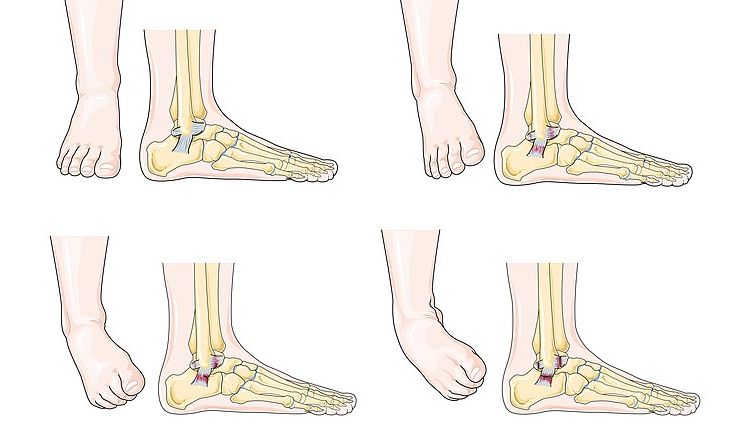Ankle sprains – chronic and unresolved?
Ankle sprains are a common presentation to our practice. It is common for us to be presented with either a recent ankle sprains or the effects of a previous ankle sprain.
About 85% of ankle injuries are sprains, and 85% of those are inversion injuries. An inversion injury is with the foot twists outwards. Common example are stepping in a hole, or on an object, or on the sand, and the foot twists outwards causing sudden pain on the outside of the foot.
This can cause stretching, tearing or inflammation to the ligaments on the outer side of the ankle. Sometimes the muscle can be affected, and sometimes the bone may fracture, and part of our diagnostic work-up is to assess for the cause of the pain.
Ankle sprains are important in children, because their growth plates have not yet ossified (completed growth process of becoming bone). Different structures in the ankle ossify at different rates, and this process is usually completed between ages 14-18.
Our process when you present with ankle sprains is to perform a thorough history and examination. This may include carefully feeling all structures, range of motion tests and instability tests. Ankle sprains can be graded into different grades.
We also look at function of the ankle in terms of biomechanics of joints. When joints are not moving well, the adjacent muscles and ligaments may have issues healing well.
It is quite common for us to see people who’s swelling and inflammation have resolved, but joint biomechanics have not, and therefore pain, or poor function remains.
This may include loss of range of motion, muscles weakness, and poor ability to control the foot (e.g. when standing on one leg).
This is quite common in someone who sprained their ankle previously but has had no assessments/care done.
References
Behrman et al, Nelson’s Pediatrics.
Khan, K., & Bruker, P. (1998). Ankle acute injuries. In: Encyclopedia of Sports Medicine and Science,T.D.Fahey (Editor). Internet Society for Sport Science: http://sportsci.org. 7 March 1998




